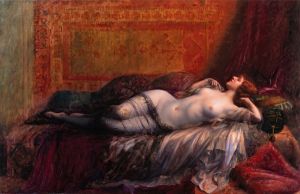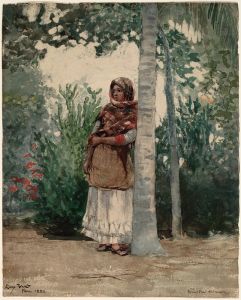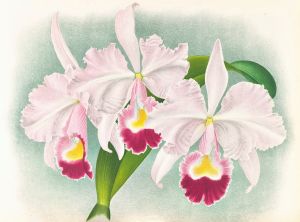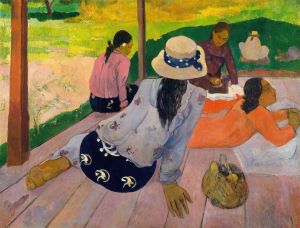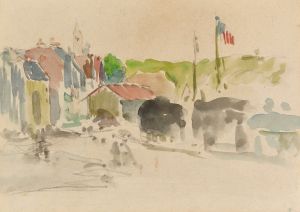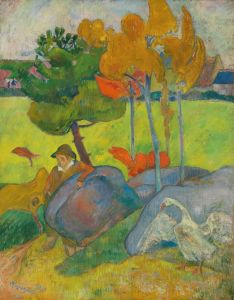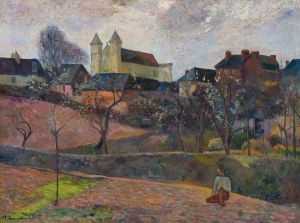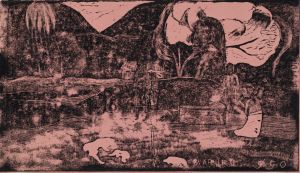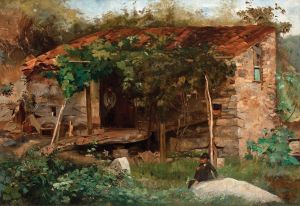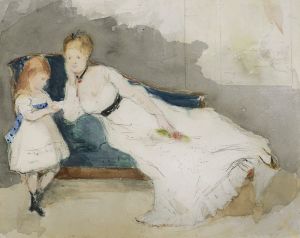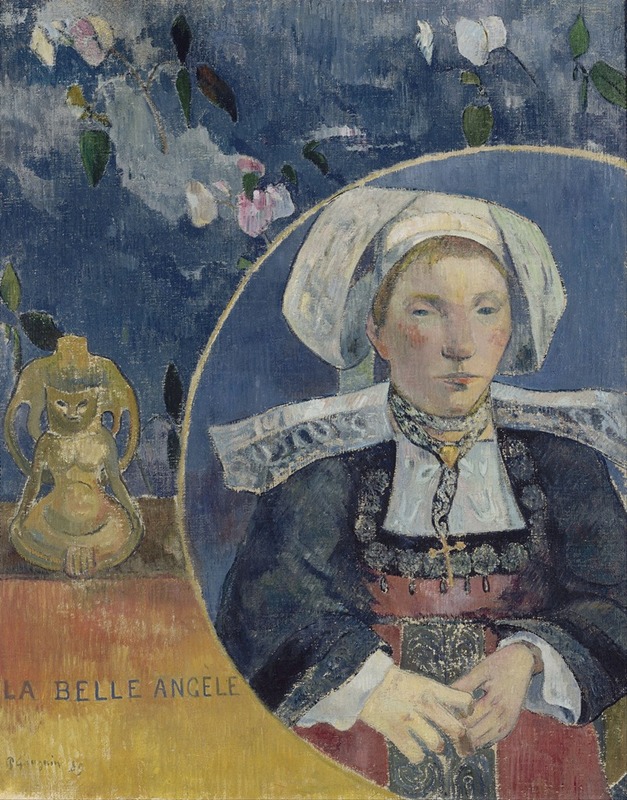
La Belle Angèle
A hand-painted replica of Paul Gauguin’s masterpiece La Belle Angèle, meticulously crafted by professional artists to capture the true essence of the original. Each piece is created with museum-quality canvas and rare mineral pigments, carefully painted by experienced artists with delicate brushstrokes and rich, layered colors to perfectly recreate the texture of the original artwork. Unlike machine-printed reproductions, this hand-painted version brings the painting to life, infused with the artist’s emotions and skill in every stroke. Whether for personal collection or home decoration, it instantly elevates the artistic atmosphere of any space.
"La Belle Angèle" is an oil painting created by the French Post-Impressionist artist Paul Gauguin in 1889. This work is notable for its distinctive style and the way it reflects Gauguin's evolving artistic vision during a critical period in his career. The painting is part of Gauguin's exploration of symbolism and his departure from traditional European artistic conventions.
The subject of "La Belle Angèle" is Angélique Marie Satre, a woman who was known to Gauguin during his time in Pont-Aven, a small village in Brittany, France. Pont-Aven was a popular destination for artists in the late 19th century, and it was here that Gauguin developed his unique style, characterized by bold colors, strong outlines, and a departure from realistic representation. This painting is a testament to Gauguin's interest in capturing the essence of his subjects rather than their literal appearance.
In "La Belle Angèle," Gauguin employs a flat, decorative style that is influenced by both Japanese prints and the cloisonnism technique, which he helped pioneer. Cloisonnism involves the use of bold outlines and flat areas of color, reminiscent of stained glass or cloisonné enamel work. This approach is evident in the way Gauguin renders Angélique's face and clothing, using simplified forms and vibrant colors to convey her presence.
The composition of the painting is carefully constructed, with Angélique depicted in a frontal pose, her gaze directed outward. She is adorned in traditional Breton costume, which includes a distinctive headdress and richly patterned clothing. The background features abstracted floral motifs, adding to the decorative quality of the work. Gauguin's use of color is particularly striking, with a palette that includes deep blues, greens, and reds, creating a sense of harmony and balance.
"La Belle Angèle" is significant not only for its aesthetic qualities but also for its role in Gauguin's artistic development. During this period, Gauguin was increasingly interested in exploring themes of identity and cultural expression, often drawing inspiration from the people and landscapes of Brittany. This painting reflects his desire to move beyond the constraints of Impressionism and to forge a new path that emphasized emotional and symbolic content.
The painting is housed in the Musée d'Orsay in Paris, where it is part of a collection that showcases the works of major artists from the late 19th and early 20th centuries. "La Belle Angèle" is considered an important example of Gauguin's work and a key piece in understanding the evolution of modern art. It exemplifies his innovative approach to form and color, as well as his interest in capturing the spirit of his subjects.
Overall, "La Belle Angèle" stands as a testament to Paul Gauguin's artistic vision and his contribution to the development of Post-Impressionism. Through this work, Gauguin challenged conventional artistic norms and paved the way for future generations of artists to explore new modes of expression.







